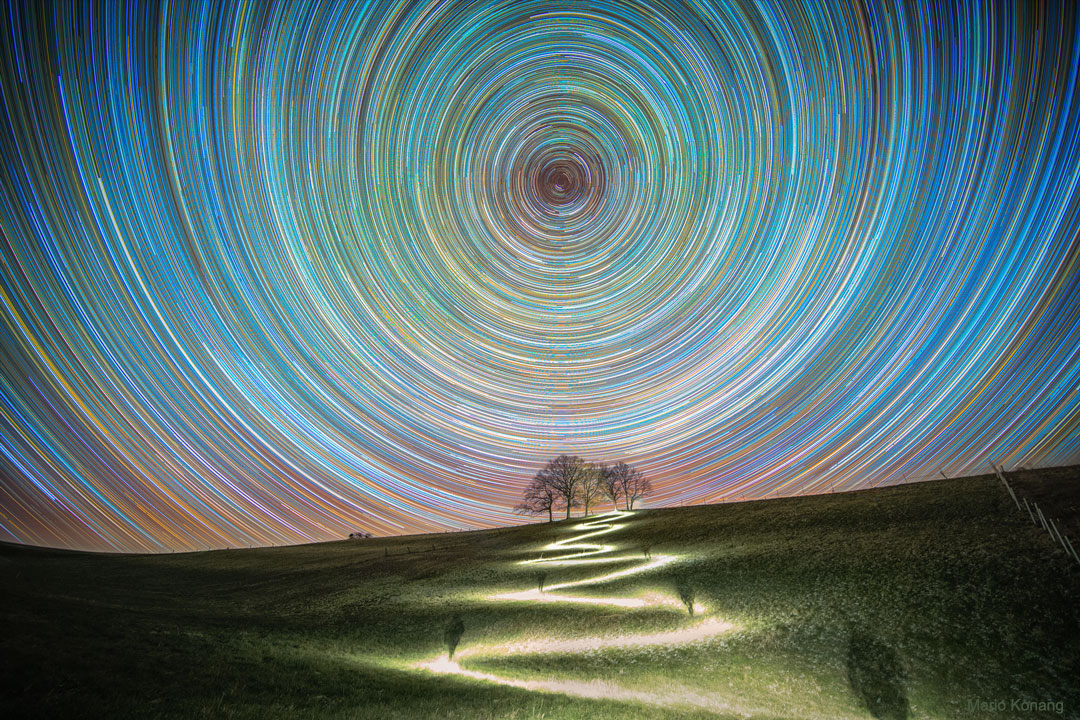2020 April 7
A Path North
Image Credit & Copyright: Mario Konang
Explanation: What happens if you keep going north? The direction north on the Earth, the place on your horizon below the northern spin pole of the Earth — around which other stars appear to slowly swirl, will remain the same. This spin-pole-of-the-north will never move from its fixed location on the sky — night or day — and its height will always match your latitude. The further north you go, the higher the north spin pole will appear. Eventually, if you can reach the Earth’s North Pole, the stars will circle a point directly over your head. Pictured, a four-hour long stack of images shows stars trailing in circles around this north celestial pole. The bright star near the north celestial pole is Polaris, known as the North Star. The bright path was created by the astrophotographer’s headlamp as he zigzagged up a hill just over a week ago in Lower Saxony, Germany. The astrophotographer can be seen, at times, in shadow. Actually, the Earth has two spin poles — and much the same would happen if you started below the Earth’s equator and went south.
Tomorrow’s picture: contrasting skies
北行之路
图像提供与版权:Mario Konang
说明:如果你一路北行会怎样?地球的北方,除了是地球自转轴所指的方向,也是其他恒星缓缓旋绕的中心点,会恒定不动。这个地轴所指的北天极,不分日夜,在天空的位置固定不变,而它的仰角等同于你所在的纬度。所以越往北走,北天极的仰角也越高。最后当你抵达地球的北极时,恒星会绕着头顶的点转圈。上面这幅叠合4个小时数据的影像,呈现了恒星绕这个北天极回旋的景象。其中,北天极附近的亮星即为北极星。明亮曲折的光痕,則是一星期前位在德國. 下萨克森尼的天文摄影者,沿之字形的山路上山时,其头灯所曳出的迹线。是以在山路上,偶而还可见到这位天文摄影者的身影。事实上地球有二个极,当你从赤道下方往南走,也会见到类似的景观。
明日的图片:contrasting skies







